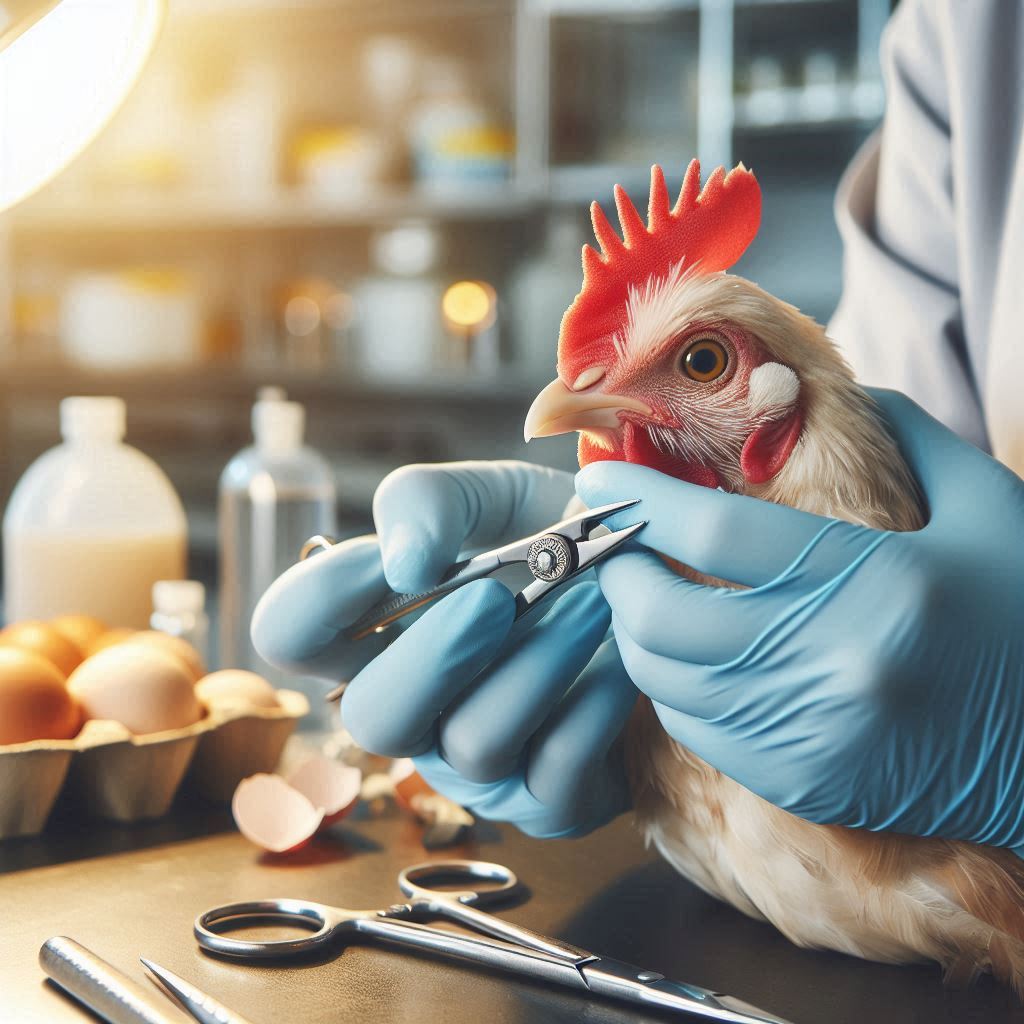The Chicken Beak: Importance and Care
The chicken beak is a vital part of the bird’s body. It helps chickens eat, groom, explore, and defend themselves. Made of keratin, like human nails, the beak keeps growing throughout the bird’s life. A chicken may struggle to eat if damaged, leading to malnutrition or starvation, and it’s time to trimming the chicken’s beak. This article explores the beak’s structure, functions, and the practice of beak trimming of chicken.
Structure of the Chicken Beak
The beak has two main parts:
- Upper Beak (Maxilla) – Fixed in place, it provides structure and helps grasp food.
- Lower Beak (Mandible) – Movable and works with the upper beak to manipulate food.
Both parts are covered in keratin and grow continuously.
Why is Beak Trimming Done?
Beak trimming, or debeaking, is common in poultry farming. It helps prevent harmful behaviors like feather pecking, cannibalism, and aggression. These behaviors often arise due to overcrowding and stress. Trimming the beak reduces injuries and improves bird welfare.
Main Reasons for Beak Trimming
- Prevents Injuries – Limits damage from aggressive pecking.
- Reduces Feed Waste – Helps birds eat more efficiently.
- Improves Welfare – Lowers stress and reduces fights in flocks.
Methods of Beak Trimming
Beak trimming should be done by trained professionals to minimize pain and stress. Common methods include:
- Infrared Beak Treatment (IBT) – Uses infrared light to remove the tip. The beak falls off naturally in weeks. This method is precise and less painful.
- Hot Blade Trimming – Uses a heated blade to cut the beak. It can cause discomfort and requires careful handling.
- Mechanical Trimming – Uses a sharp tool to clip the beak manually. This method can cause bleeding and pain.
- Electric Beak Trimming – Similar to hot blade trimming but uses an electric device.
Best Practices for Beak Trimming
To ensure minimal discomfort, farmers should:
- Trim chicks at 1 to 10 days old for quicker healing.
- Use properly maintained equipment.
- Provide vitamins K and C to aid recovery.
- Monitor birds for distress, bleeding, or feeding issues.
Risks and Controversies
Beak trimming is debated in the poultry industry. Some argue it causes pain and affects natural feeding. Others believe it prevents more serious problems like cannibalism and injuries.
Alternatives to Beak Trimming
To reduce the need for trimming, farmers can:
- Provide More Space – Overcrowding increases stress and aggression.
- Use Enrichment – Perches and pecking objects keep chickens engaged.
- Select Gentle Breeds – Some breeds are naturally less aggressive.
- Adjust Lighting – Proper lighting reduces stress-related pecking.
Conclusion
The chicken beak is essential for survival. While beak trimming helps manage aggression, it should be done carefully. Alternatives like better housing and breed selection can improve bird welfare. A balanced approach ensures healthier and happier chickens.
